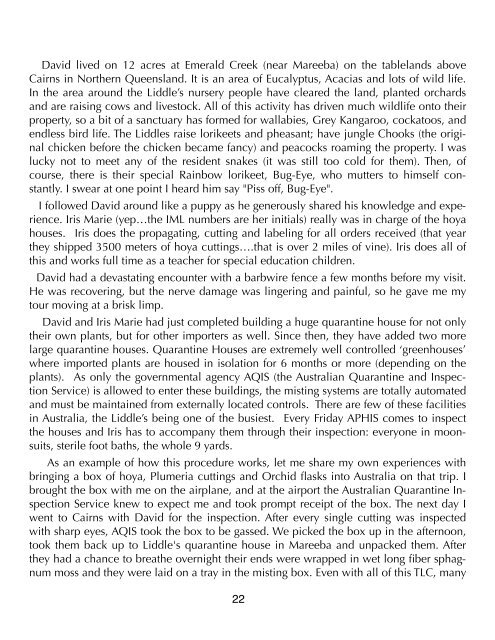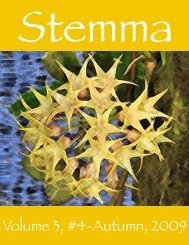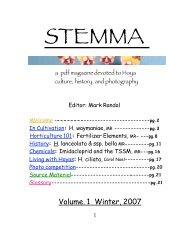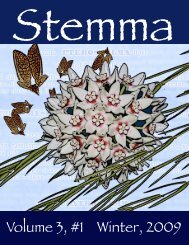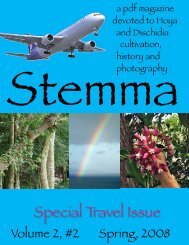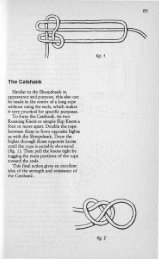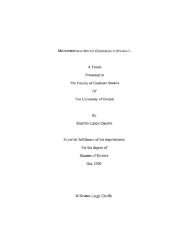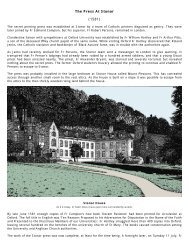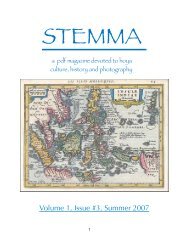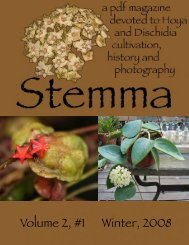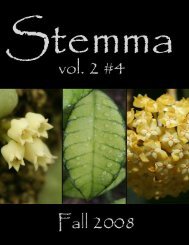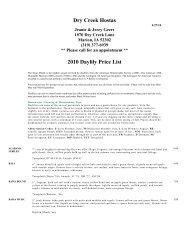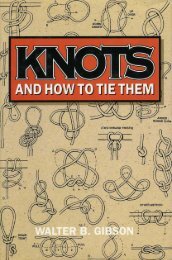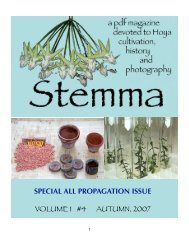Volume 3, Issue #4 - Cubits
Volume 3, Issue #4 - Cubits
Volume 3, Issue #4 - Cubits
Create successful ePaper yourself
Turn your PDF publications into a flip-book with our unique Google optimized e-Paper software.
David lived on 12 acres at Emerald Creek (near Mareeba) on the tablelands above<br />
Cairns in Northern Queensland. It is an area of Eucalyptus, Acacias and lots of wild life.<br />
In the area around the Liddle’s nursery people have cleared the land, planted orchards<br />
and are raising cows and livestock. All of this activity has driven much wildlife onto their<br />
property, so a bit of a sanctuary has formed for wallabies, Grey Kangaroo, cockatoos, and<br />
endless bird life. The Liddles raise lorikeets and pheasant; have jungle Chooks (the original<br />
chicken before the chicken became fancy) and peacocks roaming the property. I was<br />
lucky not to meet any of the resident snakes (it was still too cold for them). Then, of<br />
course, there is their special Rainbow lorikeet, Bug-Eye, who mutters to himself constantly.<br />
I swear at one point I heard him say "Piss off, Bug-Eye".<br />
I followed David around like a puppy as he generously shared his knowledge and experience.<br />
Iris Marie (yep…the IML numbers are her initials) really was in charge of the hoya<br />
houses. Iris does the propagating, cutting and labeling for all orders received (that year<br />
they shipped 3500 meters of hoya cuttings….that is over 2 miles of vine). Iris does all of<br />
this and works full time as a teacher for special education children.<br />
David had a devastating encounter with a barbwire fence a few months before my visit.<br />
He was recovering, but the nerve damage was lingering and painful, so he gave me my<br />
tour moving at a brisk limp.<br />
David and Iris Marie had just completed building a huge quarantine house for not only<br />
their own plants, but for other importers as well. Since then, they have added two more<br />
large quarantine houses. Quarantine Houses are extremely well controlled ‘greenhouses’<br />
where imported plants are housed in isolation for 6 months or more (depending on the<br />
plants). As only the governmental agency AQIS (the Australian Quarantine and Inspection<br />
Service) is allowed to enter these buildings, the misting systems are totally automated<br />
and must be maintained from externally located controls. There are few of these facilities<br />
in Australia, the Liddle’s being one of the busiest. Every Friday APHIS comes to inspect<br />
the houses and Iris has to accompany them through their inspection: everyone in moonsuits,<br />
sterile foot baths, the whole 9 yards.<br />
As an example of how this procedure works, let me share my own experiences with<br />
bringing a box of hoya, Plumeria cuttings and Orchid flasks into Australia on that trip. I<br />
brought the box with me on the airplane, and at the airport the Australian Quarantine Inspection<br />
Service knew to expect me and took prompt receipt of the box. The next day I<br />
went to Cairns with David for the inspection. After every single cutting was inspected<br />
with sharp eyes, AQIS took the box to be gassed. We picked the box up in the afternoon,<br />
took them back up to Liddle's quarantine house in Mareeba and unpacked them. After<br />
they had a chance to breathe overnight their ends were wrapped in wet long fiber sphagnum<br />
moss and they were laid on a tray in the misting box. Even with all of this TLC, many<br />
22


